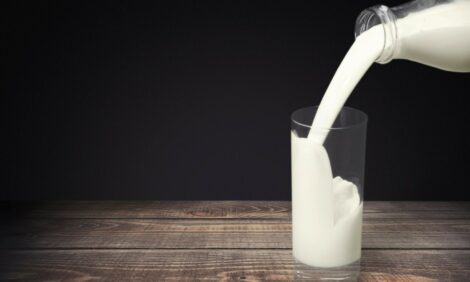



Targets Good First Step but Fonterra Must Reduce Dairy Herd, Says Greenpeace
NEW ZEALAND - Greenpeace have welcomed Fonterra’s pledge to substantially reduce climate emissions from agriculture, but say there is a "gaping hole" in the plan.Yesterday, New Zealand’s largest dairy producer pledged to reduce its net greenhouse gas emissions by 30 per cent by 2030, with a long term aim to achieve net zero emissions by 2050.
Greenpeace campaigner, Amanda Larsson, says it’s positive to see Fonterra "finally" acknowledging their significant contribution to climate change.
"Setting targets to reduce their impact is an important first step, however Fonterra still seem to be in denial of the fact that taking action on climate change means reducing the dairy herd.
"Promising to reduce climate emissions but then continuing to increase cow numbers, is like promising to delete Tinder but then continuing to swipe right."
On Monday, climate scientists released new figures showing that human-induced climate change is happening faster than ever.
The researchers warn there isn’t much time left to achieve the goals set out in the Paris climate agreement.
Given the urgency of the problem, Ms Larsson says Fonterra’s proposed approach to reducing the bulk of its emissions is simply too risky.
"Fonterra are relying on some pretty aspirational and unproven technological fixes to address a major source of their emissions - burping cows," said Ms Larsson.
"There is a rather gaping hole in that plan.
"We urgently need a dramatic reduction in greenhouse gas emissions from livestock. The only way to do that in the time we have available is to reduce the herd."
The milk giant have indicated they are betting on technological breakthroughs such as methane vaccines and low emissions feeds to cut down the enormous amounts of methane and nitrous oxide emissions produced by cattle.
In a 2016 report on emissions from agriculture, then Parliamentary Commissioner for the Environment, Dr Jan Wright found, "There are no successful trials of a methane vaccine as yet” and that “there are no silver bullets on the horizon yet."
The new Agriculture Minister, Damien O’Connor recently acknowledged that New Zealand has already reached 'peak cow'.
Greenpeace, along with sixteen other organisations, is calling on the Government to invest in a nationwide transition from intensive dairying to more diverse, regenerative farming models.
"Reducing the herd and moving towards regenerative farming is a double win. At the same time as we reduce our impact on the climate, we clean up our rivers and drinking water," said Ms Larsson.
As part of the their climate plan, Fonterra have also indicated they aim to replace the coal used at their milk drying plants with electricity and wood biomass.
Fonterra are the second largest user of coal in New Zealand, after the steel industry. They burn hundreds of thousands of tonnes of coal per year to turn milk into powder that gets shipped overseas.
"We’re pleased to see that Fonterra are now looking seriously at replacing coal. This decision is likely the result of years of public pressure, including from groups like Coal Action Network Aotearoa," said Ms Larsson.
"However, around the world coal is already a dead or dying industry. Fonterra’s plan seems to be to continue to build coal boilers for the next 13 years, and then to start phasing them out.
"This isn’t exactly ambitious - why wait more than a decade - why not start today?"
TheCattleSite News Desk


